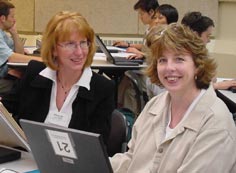 |
|
||||||||||||||||||||||||||||||||||||||||||||||||||||||||||||||||||||||||||

|
Customizable graphic organizer templates
Chinese - if you are on a Mac, the "Mac_save" versions seem to work well and you can save your changes. If you are on Windows, you will need to use the original version (1st column) which cannot be saved unless you have the full professional version of Acrobat (not just the Reader), or use the PDF995 described in Step 7.
All graphic organizers included on this website were adapted from models included in the Nebraska K-12 Foreign Language Frameworks which utilized original work by: Bellanca, J. (1992). The cooperative think tank II: Graphic organizers to teach thinking in the cooperative classroom. Palatine, Illinois: IRI/Skylight Training and Publishing, Inc. Hudelson, S. (Ed.) (1995). English as a second language: Teacher resource handbook–A practical guide for K-12 ESL programs. Thousand Oaks, California: Corwin Press Inc., Sage Publications Co. Mikulecky, B. (1985). Reading skills instruction in ESL. In P. Larson, L. Judd, & D. Messerschmitt (Eds.), On TESOL ‘84: A brave new world for TESOL (pp. 261-277). Washington, DC: Teachers of English to Speakers of Other Languages. Winebrenner, S. (1996). Teaching kids with learning difficulties in the regular classroom. Minneapolis: Free Spirit Publishing, Inc.
|
||||||||||||||||||||||||||||||||||||||||||||||||||||||||||||||||||||||||||